Re:
HASHISH is a word of Arabic origin for the marijuana concentrate of a high potency, consists mostly of resin of a cannabis plant. It counts a great variety of methods of extraction, practiced and mastered for centuries. Consumed by vaporization as dubs or as a mix with tobacco, also used as a component for cannabis edibles. In Morocco the name for hashish is KIF.
Moroccan “love candy” called Majoun, brilliant storms of laughter
Thu, 12/Oct/23
Alice B. Toklas hashish fudge recipe, which we have discovered in her famous cookbook, has a strong link to the Moroccan hashish candy, aka love candy. It is called “majoun”, a traditional confection made of hashish, nutmeg, black pepper, other spices, and dried fruits in Berber cuisine, also found in India and Iran. Majoun’s primary purpose is spirituality and fun, of course, also peace and love, as its name means “love potion”. Besides, majoun helps greatly to stand common cold.
Who was Alice B. Toklas?
Alice Babette Toklas migrated from San Francisco to Paris in 1907, when she was 29. She was not a pretty girl: “the tiny stature, the sandals, the mustache, and the eyes”, but she used to be a charismatic hostess of her Parisian café, and a magnetic schmoozer.
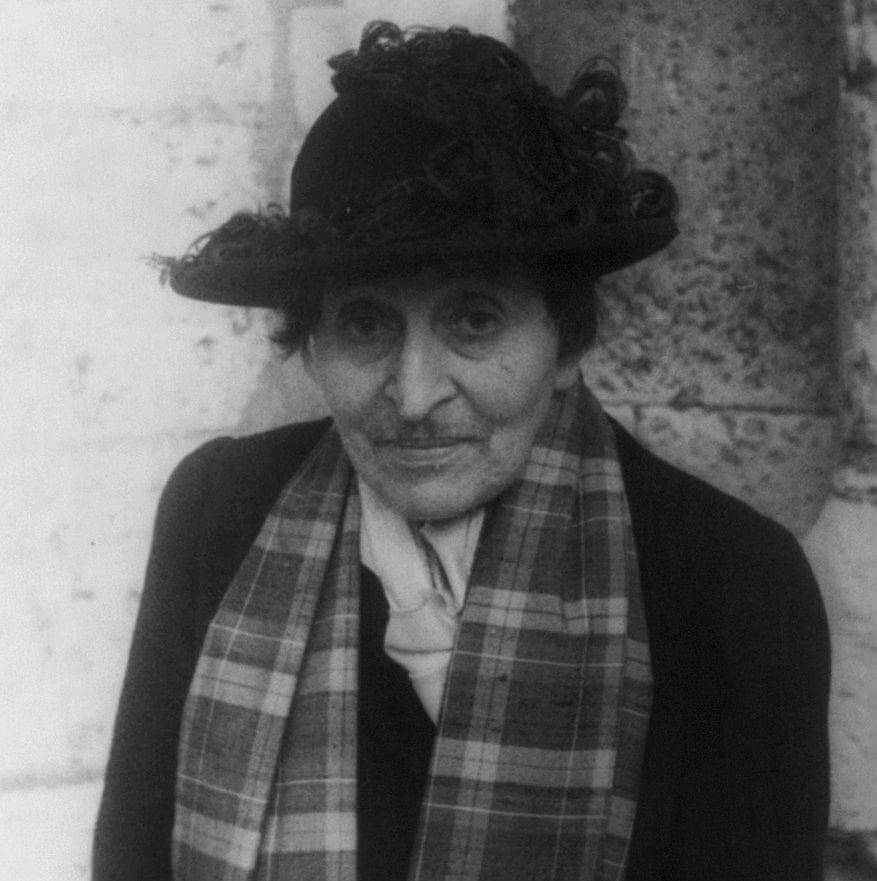
Alice B. Toklas
Eventually, the hashish edibles along with the obvious virtuosity of the cook and the “enchantment of her speaking voice – like a viola at dusk” made Ernest Hemingway, Scott Fitzgerald, Pablo Picasso, and Henri Matisse hung out frequently at her gatherings. Surely, the reason was not her mustache, ha-ha, I’m sorry, I’m just kidding. Anyway, thank you, Alice B. Toklas, for the fantastic assembly!
When the edibles kick in
This is a joke in the first place. Artists express the mind in their artworks, so we tracked down how Matisse and Picasso, “the wild men of Paris”, have changed their paintings after Alice B. Toklas opened the doors of her saloon. We do not insist there is any correlation between hashish edibles kick in and the paintings, the coincidence there is, nonetheless.
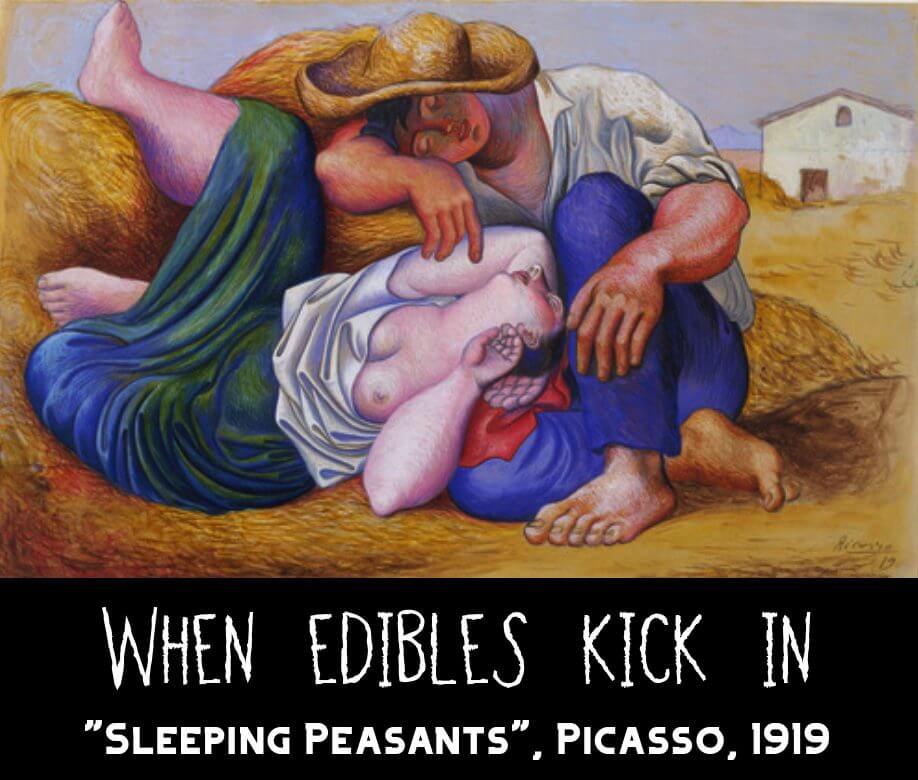
Alice B. Toklas Cookbook
Alice B. Toklas’s book is not entirely an edible bible, to be precise, but a cookbook of an extravagant genre: called “autobiographic cookbook”. I dare to believe, this is the world’s only work of the kind, where the events of life are mixed in a ragtag with the recipes of the French cuisine, which Alice Babette Toklas approved greatly.
- Alice B. Toklas cookbook is not made of cooking directions of a classic style, but they are small stories. She shared the recipes she collected all life, so she described all the trailing circumstances – how and when, and from whom she borrowed this or that one.
- Alice B. Toklas spelled the hashish and marijuana words differently compared to the norm of the modern-day, she referred to hashish as “haschich”, and she called cannabis “canibus” or “canibus sativa” in her writing.
- When the Alice B. Toklas book was published in 1954 the authorities in America strongly disregarded the inclusion of marijuana edibles. Later in an interview, she excused herself: “The recipe was innocently included without my realizing that the hashish was the accented part of the recipe. I was shocked to find that America wouldn’t accept it because it was too dangerous.”
- Alice B. Toklas suggests that the mix of hashish, black pepper, and nutmeg in a form of candy is effective to survive the common cold: “In Morocco, it is thought to be good for warding off the common cold in damp winter weather and is, indeed, more effective if taken with large quantities of hot mint tea.”
Alice B. Toklas Hashish Fudge
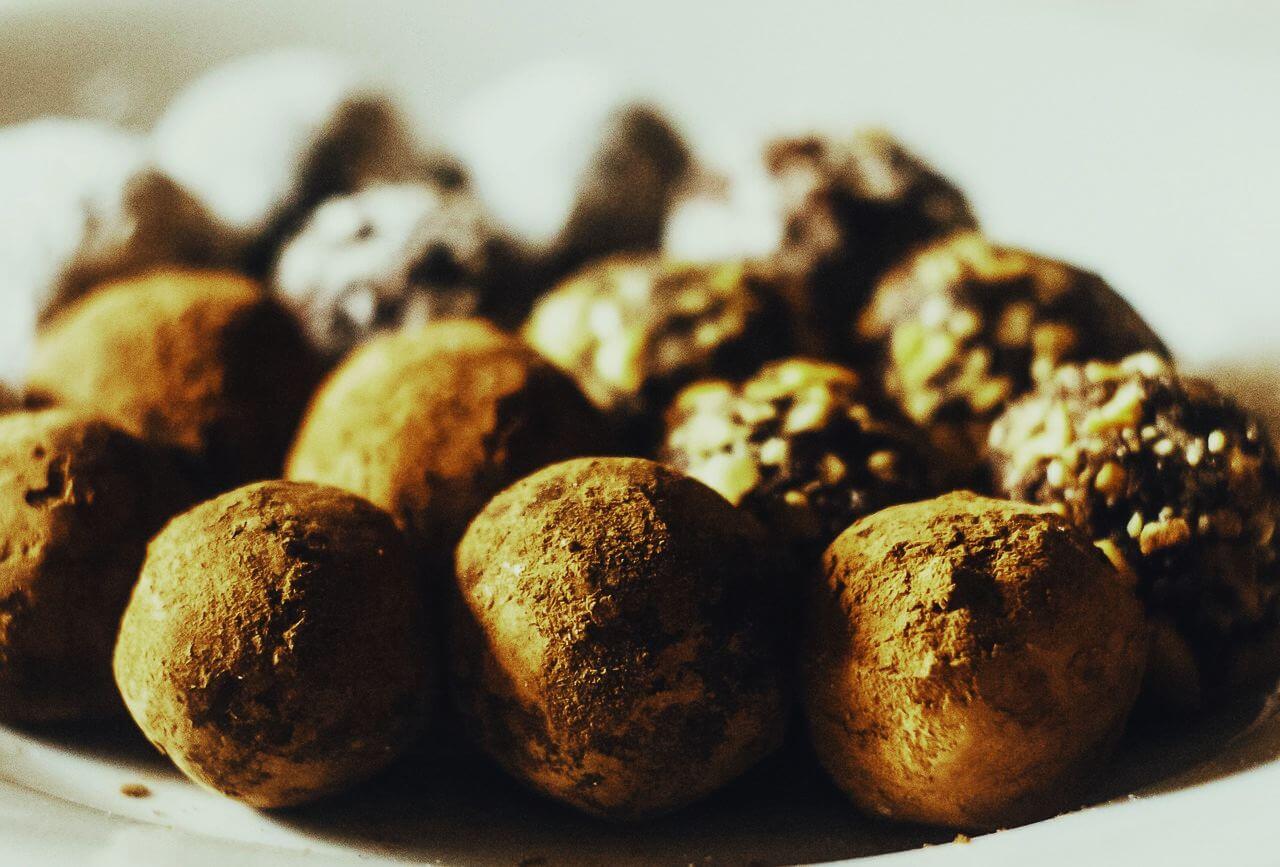
“Take one teaspoon of black peppercorns, one whole nutmeg, four sticks of cinnamon, and one teaspoon of coriander. These should all be pulverized in a mortar. About a handful each of stoned dates, dried figs, shelled almonds, and peanuts: chop these and mix them together. A bunch of ‘canibus sativa’ can be pulverized. This along with the spices should be dusted over the mixed fruit and nuts, and kneaded together. About a cup of sugar dissolved in a big pat of butter. Rolled into a cake and cut into pieces or made into balls about the size of a walnut, it should be eaten with care. Two pieces are quite sufficient. Obtaining the ‘canibus’ may present certain difficulties. It should be picked and dried as soon as it has gone to seed and while the plant is still green.”
The hint is – mash it by hand. Some sources recommend a food processor to blend by several short pulses, however cooking marijuana edibles is a mystery and a joy for the heart: as you love to roll joints manually, where a grinder is the only machinery, so cooking with hands and no machinery gives its fruits, you better believe it.
“Euphoria and brilliant storms of laughter; ecstatic revelries and extensions of one’s personality on several simultaneous planes are to be complacently expected,” – Alice B. Toklas.
Alice B. Toklas Brownie
Alice B. Toklas brownie has happened in the movie “I love you, Alice B. Toklas” of 1968, and not in her cookbook of 1954. Nancy, the character of Leigh Taylor-Young, used “Fudge Brownie” from a box for cooking marijuana brownies.


Leigh Taylor-Young as Nancy
The recipe in the book was for candy, and not a brownie. At least, there is no chocolate in the Moroccan candy of Alice B. Toklas, but a similarity between the names “Haschich Fudge” branded in the cookbook and “Fudge Brownie” branded in the movie could lead to confusion.
Decarboxylation
Remarkably, neither Alice B. Toklas in her book nor the makers of the “I love you, Alice B. Toklas” movie mention anyhow the decarboxylation of weed for edibles. Why?
- Well-cured cannabis already has a fair quantum of THC instead of THCA. This is what we achieve by decarboxylation. This makes cured cannabis more potent, if we smoke it, and edible-ready evenly.
- Traditional methods of making hashish yield decarbed hashish. This includes Moroccan kif, which is the original ingredient of the Moroccan hashish candy of Alice B. Toklas.
- Decarboxylation will not harm whatsoever, but it shall kick in better anyway. Proper decarb process may result in up to 80-90% of THCA broken to THC, which you doubtfully can reach by curing.
Grind dry marijuana trim or buds, spread it over a cooking tray or a frying pan, then expose it to the temperature of 230-250℉, roughly 110℃, for about 30-40 minutes in the oven. Do not over-heat, otherwise, THC can be destroyed at all and you lose your weed. Applying “Bath Marie”, aka water bath, or crockpot, we extend the time to 1-1.5 hours.
Can I use cannabutter for Alice B. Toklas hashish fudge?
The short answer: yes, of course.
As soon as the famous Alice B. Toklas edible recipe already contains a “big pat of butter” in itself, therefore using cannabutter for making the weed edible is just logical. However, the original recipe suggests using buds or trim straight away as described in Alice B. Toklas book, or hashish (kif) as in the traditional Moroccan hashish candy recipe.
Cooking-wise, any random original recipe, and especially when it is that old, lasting for centuries, is tested by time, it becomes already impeccable. Our hashish candy contains other spices, some of them are somewhat psychoactive, like black pepper or nutmeg. If you wish, this makes marijuana a spice, or a fruit, applying to Alice B. Toklas hashish fudge.
Cannabutter is awesome, but specifically for this candy, I favor using buds as a spice rather than input cannabutter as a source of high only: after all, nobody knows what else the ancients meant when invented this recipe for us.
Best recipes for the munches
Edibles we eat to be high, while munches we eat being already high. Munches are all munches, not necessarily psychoactive. Here is our best selection of the munches recipes of Alice B. Toklas.
Alice B. Toklas Flaming Peaches
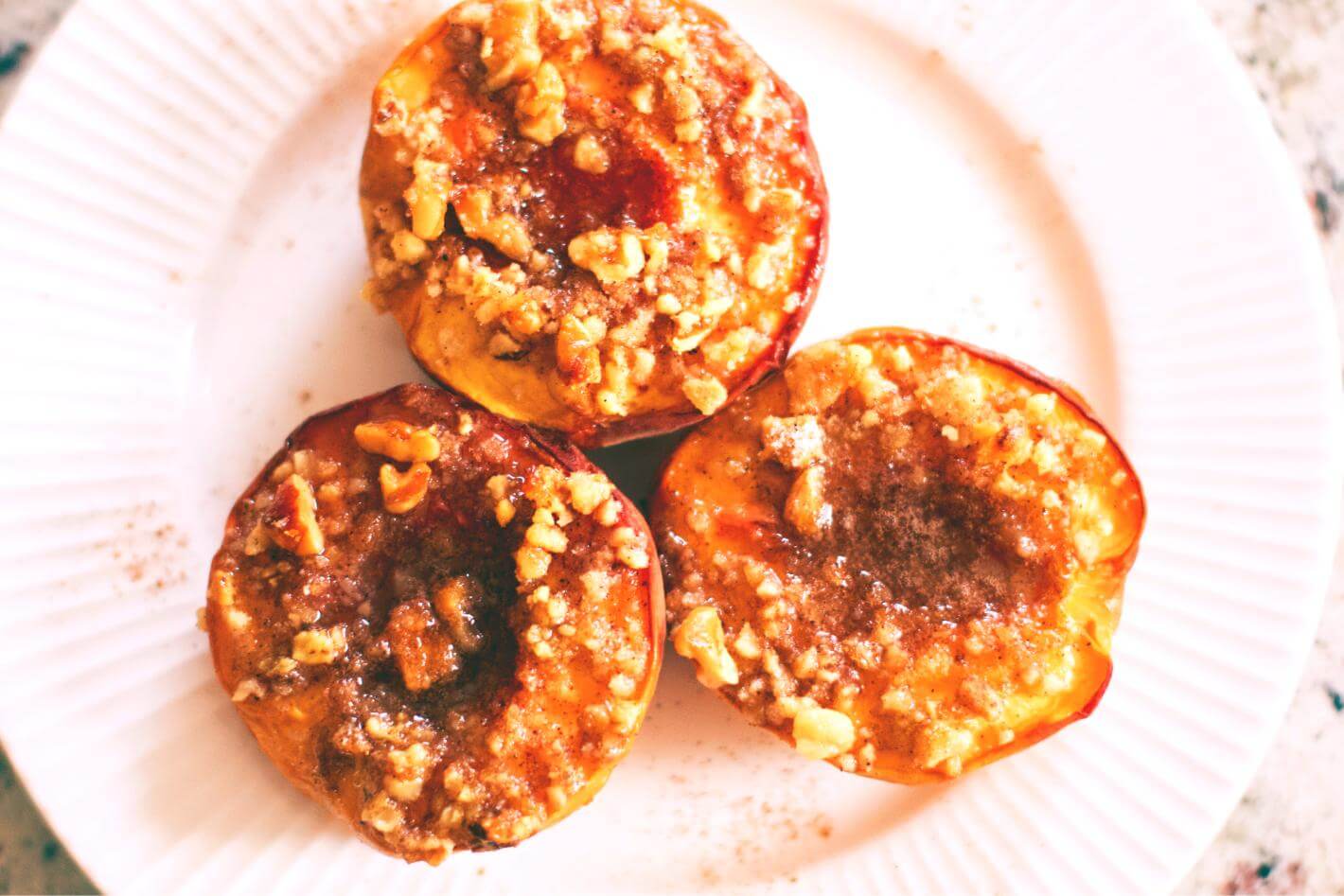
Flaming peaches, or Peach flambe
“Fresh peaches are preferable, though canned ones can be substituted. If fresh, take 6 and cover with boiling water for a few minutes, and peel. Poach in 1½ cups of water over low flame for 3 or 4 minutes. Place in a chafing dish, add ¼ cup of sugar, and ¾ cup of peach brandy. Bring to the table and light the chafing dish. When the syrup is about to boil, light and ladle it over the peaches. Serve each peach lighted.”
Alice B. Toklas Mushroom Sandwich
“Mushroom sandwiches have been my specialty for years. They were made with mushrooms cooked in butter with a little juice of lemon. After 8 minutes of cooking, they were removed from heat, chopped, and then pounded into a paste in the mortar. Salt, pepper, a pinch of cayenne, and an equal volume of butter were thoroughly amalgamated with them. Well and good.”
Alice B. Toklas Chicken Sandwich
“This method is the same up to a certain point. These are the proportions. For ¼ lb. mushrooms cooked in 2 tablespoons of butter add 2 scrambled eggs and 3 tablespoons grated Parmesan cheese and mix well. The recipe ends with: This makes a delicious sandwich that tastes like chicken. A Frenchman can say no more. Which gave me the idea of introducing chicken sandwiches in which chopped and pounded chicken is substituted for the mushrooms. Naturally, they are well received.”
Enjoy!
Street names for weed in different countries
Fri, 11/Feb/22
Using different slang for weed from around the world is fun, undoubtedly. Even though marijuana street names have developed within stoners’ communities in different countries historically for hiding, yet another reason for weed slang is showing devotion to cannabis culture. It is the same explanation, for why so many words exist in languages for playing football or addressing loved ones.
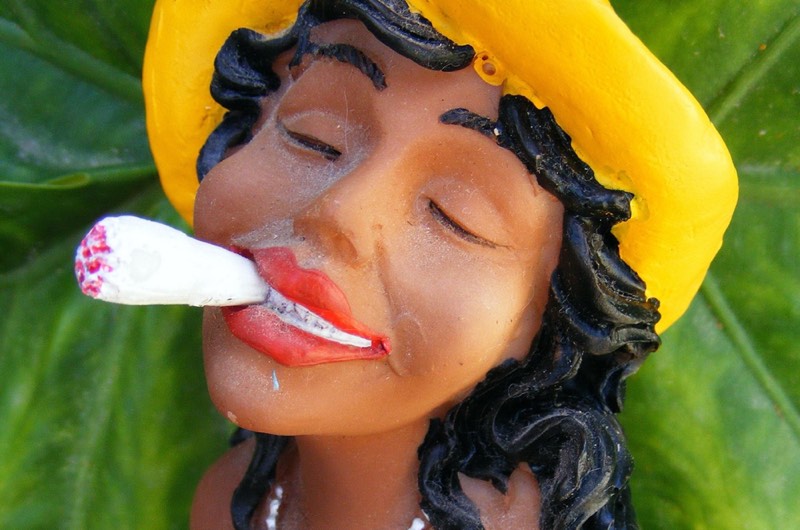
Mary Jane is Marijuana personified
Here we have shared a top-notch selection of the best weed terms, including their street names, from different countries around the world. It’s cool to have one or two extra in the vocabulary.
Common street names for marijuana in English
At the beginning of the last century, the now-official “marijuana” term was a street name for weed too. What they smoked was called cannabis, but marijuana landed in English as a nickname. The other traditional slang terms for weed are reefer, weed, dope, pot, grass, dank, loud, etc.
Marijuana (international)
Marijuana is an obvious combination of two Hispanic feminine names: María and Juana. The urban legend states that the word “marijuana” was designated artificially to support the war on plants in the United States in the middle of the past century.
The Latin (Mexican) culture was badly accepted by the American society of the time, and the law enforcement wished to advantage on a Hispanic nickname for cannabis against the marijuana culture. This is how María and Juana got bundled together to represent “marijuana”, and is doing so ever since.
1 – María is a name of Mary, the Mother of God.
2 – Juana refers to Anne, the grandmother of God.
In 1800s marijuana used to be a slang word for hooker
Another version displays that the marijuana word landed in the United States much earlier, in the late 1800s, from Mexico, again, where the double name “Maria Juana” was used as a slang word for both — recreational marijuana and addressing a random courtesan.
Mary Jane
Mary Jane as a weed term in its turn is a conversion of Spanish feminine names Maria and Juana to English. Mary is the replacement for María, and Jane is the equivalent for Juana. That is how Mary Jane has appeared for naming marijuana, also to personify it.
Herb
Herb is a widely used term for any weed, present in Bob Marley’s vocabulary, who flavored herb as a word. In the modern world, “herb” specifies industrial marijuana, from that we have cloth, construction, etc. Herb still keeps its original meaning too, yet rarely used this way.
Joint and blunt
— Joint is a traditional slang name for a rolled-up marijuana cigarette, and a general word to name anything rolled to be smoked as a marijuana cigarette.
— Blunt is a big and fat hand-rolled marijuana cigar (not a cigarette). People may call a joint of enormous size jokingly a blunt.
Spliff
Spliff is a more European word for a joint, rather than American. A spliff is usually smaller than a joint. Spliff is used to name a leftover of an unfinished joint (aka butt) regardless of whether that leftover was a joint or a spliff before burning.
Reefer
Reefer is slang for a joint or a blunt, already a history. You may be 99% sure the speaking person either is old or communicates a lot to the elder generation of stoners.
What do we call “filters” of hand-rolled joints?
A tip of a hand-rolled joint, which we hold in our fingers when smoking, is called a “roach” or a “crutch”. Both words, roach, and crutch, are used in equal measure, we hardly can determine which of the two is more popular in English, both are.
Slang for high-quality cannabis in English
Frosty nug vs sticky bud
Nug and bud both stand for marijuana flowers, usually of supreme quality. However, bud is also a lovely name for any marijuana flower, while nug is for an exceptional flower, when you suddenly feel “bud” is an understatement. Bud is like “a bud”, and nug is like “the nug”. Interchangeable in most cases.
Gas vs dank
Gas is a slang word for weed, it alludes to the famous Diesel smell of the Diesel marijuana strain of high-end quality. Gas word for weed is already not limited to the Diesel strains but fits for any exceptional weed. Yet another weed word in slang to specify the quality of weed is Dank, which may also work as an adjective.
Loud
Loud is a relatively new word in weed slang, and it stands for high quality too. It is loud in terms of smell than stinky nugs produce, and it suppresses all other smells.
What is dab?
Dab is a small piece of hashish, marijuana resin, or concentrate to puff at once. For this, we use a bong, a pipe, or a dub rig. If no “special equipment” you have to take a dab, you can also put a dab into a hand-rolled tobacco cigarette (if you are a smoker). Anyhow, dab stands for a piece of concentrate of a size to take one hit.
Marijuana street names in different countries
How to say marijuana in Spanish slang?
Slang words for marijuana are not totally equal in different Hispanic countries, however, there is a universal weed word everyone understands, it is “porro”.
Pórro
In all Spanish-speaking countries, in Spain and in Latin America, the universal slang word for weed is “pórro”. The same word refers to a single joint, to a single bud, and may mean a handful of weed, depending on the context. Any weed is porro, but a joint is a porro too.
Porro derives from the Latin word “pórrum”, which stands for leek. Porro has landed in Spanish as ajo porro, where ajo is garlic, and ajo porro together is leek. Count it as a hint, if you need an excuse, once you look for porro in a fruit market, ha-ha.
Cogóllo / cógo
For the flowers of higher quality they use the “cogollo” slang word. They pronounce it [cogósho] in Latin America, and [cogóyo] in Spain, Cuba and Mexico. The word cogollo, used for marijuana of high quality, literally means “bud”, the plural is cogollos.
Flores
Flores, just like cogollos, is a normal word, and it means literally “flowers”, any flowers in regular language, and marijuana flowers in slang. Both flores and cogollos may describe buds of excellent or fair quality. A single flower is flor, plural — flores.
Mota
In Spain and Mexico, the most popular slang word for marijuana is “mota”.
Faso
Faso is a slang word for weed used in Uruguay and Argentina, interchangeable with porro. Faso is less known compared to all-purpose porro. Stoners know what faso is, but folks who don’t smoke know porro but know faso more rarely.
Slang words for weed in Brazil
Maconha
in Brazil the main slang word for marijuana — is maconha. Keep “h” silent like in Spanish, not pronounced at all but it modifies ‘n’ into a soft ‘ñ’. It will be macóña if we write in Spanish.
Fino
A joint in the streets of Brazil is called fino, the same word describes “thin”.
How to say marijuana in Africa
Chamba
In Malawi and their neighboring countries Zambia and Tanzania they call marijuana — chamba, which is a marijuana strain growing in the north of the country: a highly psychoactive pure Sativa with the aroma of sweet fruits, also spicy. In Malawi, Tanzania, and Zambia the word chamba is also used to refer to any marijuana of fair quality.
Marketed in the US as “Malawi Chamba”, top-notch chamba and chamba seeds may be found in dispensaries and seed banks, it is the real African strain.
Dagga vs zolo
In South Africa, Botswana, and where else the Afrikaans language (the mix of African languages and Dutch) is spoken, a common slang name for any weed is dagga. Another weed word is zolo, totally interchangable.
What they call marijuana in India?
Ganja
In India, they use “ganja” to refer to marijuana. Hardly accounted as a slang word as it is the most original name for marijuana. In India ganja is often legal or decriminalized for religious use, depending on the state.
In the city of Varanasi, one of the world’s oldest continually inhabited cities, and one of the most sacred places of the Hindu world, aged 2500 years, weed is used freely to exercise religion.
Bhang
The slang word “bhang” applies to hashish. Also, bhang is marijuana-infused milk cooked with spices, where hashish is a dominant ingredient of the recipe. Such highly psychoactive edibles, infused with bhang, are available in private shops of Varanasi over the counter for religious purposes.
Slang names for weed in Sri Lanka
Ganja
People of Sri Lanka, of course, know the word “ganja”, which is not a slang name for them but just how it is called, the original name of weed.
Kandi
In the middle of Sri Lanka island, there is a county, called Kandi, in the mountains. In their land grows strong potent marijuana, and they call this strain by the county’s name — kandi. Often happens, in such cases, kandi nowadays is used as a general name for high-quality marijuana.
What the call marijuana in Russia
Plan
Plan is the word for weed in slang in Russia. In regular language “plan” is the same noun with the same meaning as “a plan” in English, and this is the most common and recognized weed slang for marijuana. Plan is a universal neutral term with minimal negative aspects possible.
Kosak and dudka
Kosak and Dudka are absolutely equal, both mean a single hand-made joint. Pronounce kosak as [kosiák] with soft ‘s’. Like you read /cognac/, read the same way /cogsac/ (hope the hint helps).
Russians rarely roll joints using regular papers. However, the most traditional way is to use “Belomor”, cheap old-school cigarettes made of the same finest materials during the latest 70+ years. You make one belomor empty of tobacco, and reload it with marijuana, as if you are in the Treasure Island book, and you load an old-fashioned cannon with powder. Totally not a classic rolling, though.
Anashá
A little bit old-fashioned slang word for marijuana — is anashá, it comes from somewhere around Kazakhstan, the word might be Persian origin, means “the queen”. It sounds mild and charming.
Bóshki
Bóshki is a noun in Russian weed slang for buds of a better quality. Bóshki is always plural.
Slang name for weed in Germany
Hanf
In Germany, the slang word for weed is “hanf”, literally hemp.
Slang names for weed in France
L’herbe
French slang word for weed is l’herbe, literally “herb” (‘h’ is silent).
Le beuh
French use le beuh to refer to marijuana of any quality, i.e. marijuana in general. The word “le beuh” literally translates to “weed”.
Kif
Kif is originally a Moroccan slang word for hashish. Subsequently, France uses kif to refer to hashish too, due to the proximity to Morocco with their famous hashish traditions.
What do they call hashish in Morocco?
Morocco takes a very special place in the cannabis stage. Moroccan hashish is the world’s well-recognized product of distinct quality. Morocco is among the top largest producers of marijuana in the world, UN reports. The slang term for hashish in Morocco is “kif” which has a wider cultural spread far beyond the boundaries of Morocco.
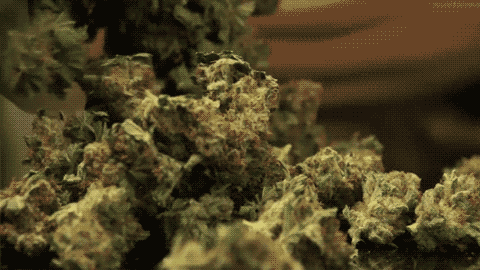
That’s weed.
Indica vs Sativa Explained
Fri, 02/Apr/21
Marijuana strains in the modern market are axiomatically divided into two main families: Indica and Sativa. These are the historical families of the cannabis plant, but just the modern breeding progressing wildly made them – “Indica” and “Sativa” – the labels, the trademarks: practically there is no pure Indica, nor pure Sativa, but just historically we find it way convenient and we stick to the definitions. I bet anyone has seen a description saying: “Indica 60%” – let’s dig up, what does it even mean?
There is also Ruderalis, becoming a popular term as autoflowering seeds are conquering the market – the easiest and fastest way to grow cheap weed at home. However, those autoflowering seeds are usually a mix of Ruderalis and either Indica or Sativa. And the latter two forever take their special place in the language, in the industry, and among end consumers – aka stoners, which is us!
What’s the difference between Indica and Sativa?
About 30 years ago I have stepped on the path of a recreational stoner, and loving it. Even though we didn’t have 50 strains over the counter, however, that day a very close friend of mine told me the difference: “The formula is simple to catch the basic idea, Sativa is to laugh, and Indica is to sleep.”
Since then I use it as the basic definition, for whoever asks me. Of course, not only this, and a whole speech follows about the myriad of nuances, but the truth is – Sativa delivers storms of laughter, and an avalanche of creativity, but Indica is to feel sleepy, relaxed, being deep into strategic thinking. This just explains everything we want to know about what is Indica, and what is Sativa.

Sativa (on the left) and Indica (on the right)
Cannabis Sativa gives a taller plant compared to Indica, which is, in general, a lower plant and bushier. Also, you can detect the domination of Indica or Sativa genetics in a marijuana plant by the shape of the leaves, and by color. Indica is in general darker with deeper green, while Sativa obviously features a lighter green color of the leaves and buds if you put both together in front of yourself. Basically, Indica and Sativa determine the type of your high.
Indica effects
Indica cannabis family originates from the northern regions of India, just as its name suggests. Thus, Cannabis Indica has evolved in a cooler climate rather than Cannabis Sativa. Cannabis Indica is considered amateur marijuana once it comes to growing weed at home: as a northern lass Indica is less whimsical, not yet all-forgiving but some grower’s mistakes it certainly allows.
Indica delivers sleepy effects indeed, recommended for the beginner stoner to bake one in the evening. It delivers vast relaxation to the body, and slowness in movements, compared to Sativa, Indica is responsible for physical effects on the body. Once you intake a good portion of Indica you get what we call “stoned”, rather than “hyper”.
Sativa effects
Sativa cannabis family has evolved closer to the equator, and it loves high temperatures and arid climates, and it gives taller slimmer plants. Many growers confirm Cannabis Sativa is harder to grow rather than Cannabis Indica.
What does Sativa make to you? Sativa strains make you “hyper” and “pro-active”, as only hyper one can be from marijuana. Anyway, you get high as it is top-notch marijuana, but Sativa just alters the mind different way and less the body’s physical condition. For the creative drive, you prefer Sativa. This is not carved in stone, and you get your creativeness and a lively mind from Indica too, but the stoners recognize it as the general idea to start from – the liveliness of Indica is “slower”, so to say.
Historical record
In 1753, a Swedish botanist Carl Linnaeus, also referred to as Carl von Linne, was the first person in recorded history who identified a cannabis plant as “Cannabis Sativa L.”, where “L.” stands for Linnaeus, his name.
In 1785, a French military scientist Jean-Baptiste Lamarck identified the other type of cannabis plant – Cannabis Indica, and he classified it as “Cannabis Indica Lam.”, where “Lam.” is for his name. I’m not a botanist but it seems obvious that they all were putting their names trailing.
In 1924, a Russian botanist Dmitry Janischevsky has identified the third variety Cannabis Ruderalis, separating it from the already-discovered Cannabis Indica and Cannabis Sativa.
Cannabis Ruderalis
Cannabis Ruderalis originates from the Chuy Valley, a natural wonder located on the border of Kyrgyzstan and Kazakhstan, where the wild weed grows for ages covering 400,000 hectares – equals the size of Delaware, full of wild marijuana, belonging to no one, totally wild.
Some sources call it Siberia, other sources call it Russia, but it is neither, it’s Chuy. This type of marijuana plant is also found in the northern Himalayas in Asia. The cold climate, compared to what Indica or Sativa enjoy, made Cannabis Ruderalis evolve as less sensitive to the light regime so that it gives flowers by reaching a definite age, rather than reacting to the rhythm of the Sun. Also, the full growing cycle of Ruderalis from seeds to buds is significantly shorter.
Cannabis Ruderalis “suffered” less marketing attention but gained its fame eventually with the development of the autoflowering seeds at the beginning of the 21st century. The genetic properties of Ruderalis concerning the light regime gave us the brilliant opportunity to grow the all-forgiving amateur weed in no time.
Why do breeders mix Sativa and Indica?
First of all original Cannabis Sativa plant may reach a great height, several meters in the wild, which is not convenient for home growing. Mixing its rich properties with the physical characteristics of Indica, including its resistance to pests and environmental conditions, is just reasonable. Hybrids and Indica-dominant strains fit a limited growing space nicely.
Secondly, the breeders work hard to satisfy the market needs, delivering the mixtures of flavors, what we call terpenes, also the amounts of THC making the recreational weed higher than high, and also delivering proper medical properties of marijuana.
Breeding is a usual process while messing with plants.
Indica vs Sativa vs Hybrid
Nowadays they are all hybrid. We have hundreds of strains in the market, and most of them indicate some percentage of Indica and some percentage of Sativa. The dominating genetics makes it this or that, but they are all hybrids, however.
What do we choose then? We choose the baseline, as weed strains come to the market marked as “more Sativa” or “dominant Sativa”, usually called simply Sativa, or “dominant Indica”, referred to as Indica, with a respect to the high effects as we described above for both types.
Examples,
- White Widow is Indica, a strong and very classic one.
- Strawberry Chemdawg is a mad mix of everything. This one we officially call a hybrid strain, it contains the aromas of strawberry, diesel, and black pepper, also featuring the energetic effects of Sativa and calmness of Indica, altogether.
- Sour Diesel is a Sativa-dominant strain, but it may relax you due to the amount of caryophyllene, the psychoactive terpene standing apart from THC or Sativa properties.
- Northern Lights, showing in its name the Northern origin, is an Indica-dominant strain of marijuana offering the classic Indica effects.
Autoflower Sativa vs Autoflower Indica
The autoflowering marijuana inherits the unusual growing cycle from Ruderalis, making it very easy to cultivate at home, requiring less growing space, and the breeders have already mixed it with Indica and Sativa – so we enjoy a good amount of high in the autoflowering plants.
Basically, the autoflowering strains share the branding with the famous normal strains but may differ in amounts of THC. There is White Widow Autoflower, and there is Sour Diesel Autoflower. Despite that any autoflower is a hybrid, we’d better call them already Autoflower Sativa and Autoflower Indica, as soon as the genetic of Ruderalis is present in the autoflowers anyway.
Examples,
- “Auto Orange Bud” contains the genetics of the classic Orange Bud, from the classic era of cannabis breeding. It is now an autoflower, and extremely high Sativa, altogether.
- “Auto Skywalker” certainly breaks the rule about lower THC in autoflowers, it counts 25% of THC, and is a Sativa strain. Limonene and Caryophyllene are also there.
- “Auto Blueberry” is another super-classics in a form of autoflower, and it’s Indica.
Practically all the weed in the nowadays marijuana market is technically hybrid, but we still use the archaic terms “Indica” and “Sativa” indication to describe clearly what is going to happen as soon as we consume it, and how we grow it. And, all the commercially distributed weed is high, but we also choose the smell, the terpenes, the price, the easiest effort to grow one at home, etc. It is great fun to know the origins and try to taste the basic difference between Indica and Sativa. So we expect and plan the type of high, and we can compare the feeling while trying all of them.
How to make hashish
Fri, 12/Jun/20
Hashish is possibly the oldest marijuana concentrate we know, also can be made using none of any chemical solvents neither complicated machinery. It consists of trichomes, resin and oils. Take some frosty fresh buds, rub extensively with fingers, the substance left on your fingers is hashish. This way they do hashish in India, for example, they roll it into a big damn ball once scrabbed from hands, and keep it this way. Called charas.
In some countries, like in Kazakhstan, I heard, they make it for fun with a girlfriend running all over the cannabis field, it’s a sunny day and it’s hot, she sweats, and all top contents of the cannabis flowers (trichomes and resin) stick onto her body, and then — scrub and smoke.
Making Hashish
Making hash is the extraction and preserving the psychoactive resin from the cannabis plant. This resin is HIGHly concentrated in the cannabis tops, in the buds, giving nugs their “frosty” appearance. Smaller amounts of the psychoactive resin can be also found in the leaves and trim of both male and female plants, which makes the whole idea to learn how to make hashish HIGHly reasonable, to get the use of all parts the plant — extract hashish, we all love doing it, for real, an especially when it comes to consumption. In a long run, except of that it is the aromatic and the effective way to consume cannabis, it is also the HIGHly economic way to consume cannabis. And a re-use shake, leaves and stems, all remains of cannabis plants, yes, you make hash from it too, once extracted it’s same resin as good as that one from buds (of course shake contains less resin, yet in the other case we just throw it away, instead of having finest hashish, hm?)
Hashish is notable for having less smell (almost none) when you have it your pocket, may be important. Also less smell when smoking, and it is not that far famous smell, not all people know it, if compare to regular marijuana. Another great feature hashish is highlighting is small size, one finger tip block of hashish will last for couple of days, giving you less burning side products as you dub it, because of size of one hit. You can roll it with tobacco, or dub it, or use a small pipe, or use a can of Coca Cola, the best use for Coca Cola can.
Cold method to extract Hashish at home
For this one we need a bucket or a smaller bowl (depending on how much harvest we want to “invest” into our hashish experiment), we put cold water into bucket, let’s make it half as we will need space for adding ice, so fill water with ice cubes and then we drop the quantities of bud into there.
Then you use a blender or another similar tool, whatever you prefer, eventually you crash this bud when it continuously hits ice pieces because of blender, go on way until the cocktail-margarita state. Take away the remains of green plant material, it must be floating, and then separate the desired material by filtering out with paper screens. Dry it and it’s ready.
Don’t do anything to the buds before you put them into water. Crushing or grinding it in advance will only damage the trichomes, decreasing the potency of the final product. The marijuana buds you use should be dry and cured for the trichomes give out the maximum potency (while curing the THCA which does not make you high converts into THC which makes you high, the well cured stuff is more effective).
The whole process is extremely clean and creates a pure clean product, very high in effect, whitish color, extremely tasty, no plant structure in it and no chemicals. Cold keeps trichomes brittle, so they separate easily.
For the very first experiments we suggest playing with small amounts before mastering to the bucket size full of kief. You may lose buds if anything goes wrong. Think about cocktail shaker for the start.
Kief
Kief (or Kif) is the Moroccan way for saying “hashish”, they call weed that way and they smoke weed in a form of hashish.
Kief is the most basic types of cannabis concentrates, counting the oldest history back into thousands years ago. It’s made of trichomes, which contain the highest shares of THC and other cannabinoids.
Kief’s color is from light green to golden, and to brownish, depending on the original material, the strains it is made of, it appears as a sandy or very fine grain powder pressed into a solid piece. You smoke one small piece of a half nail size by a pipe or a bong and you are already too high, these are pure trichomes. The cold method above in the end produces kief. Very tasty as soon as buds you use for the extraction also contain terpenes, and you get the terpenes well-dense in your kief, very pure, no oils inside neither plant tissue, mild in smoking and HIGH as hell.
In the standard weed grinder there is that famous “third compartment”, where the trichomes are collected while you use the grinder for grinding weed long enough. It becomes dense there, the light green and yellow powder. This is kief.